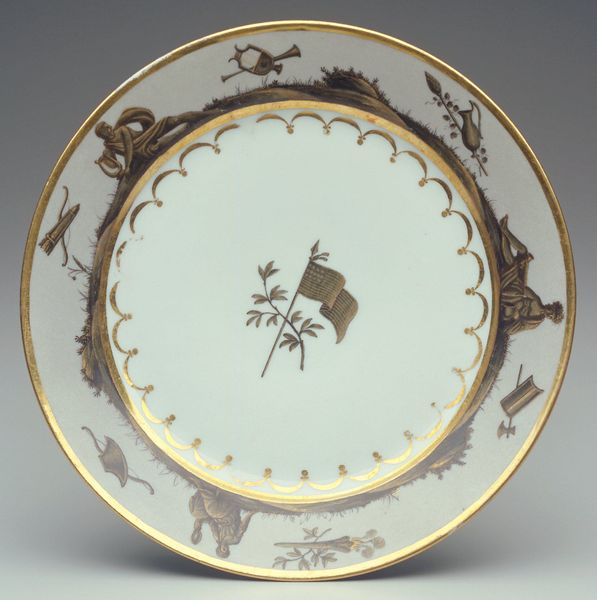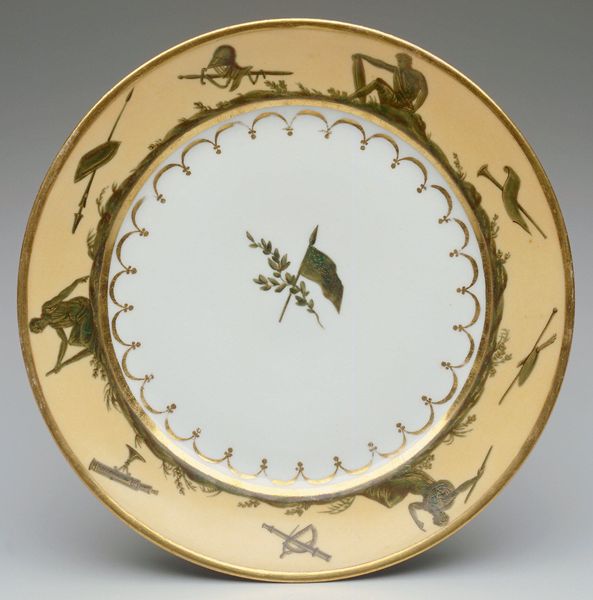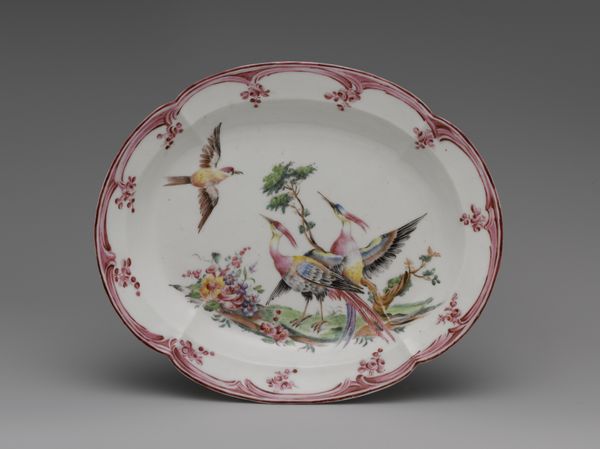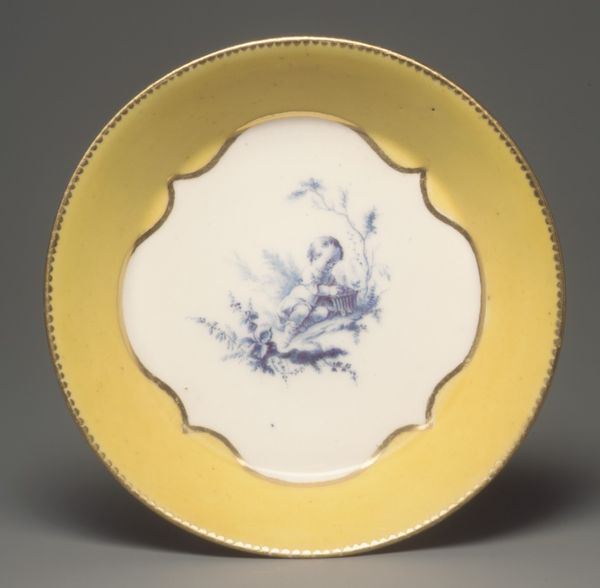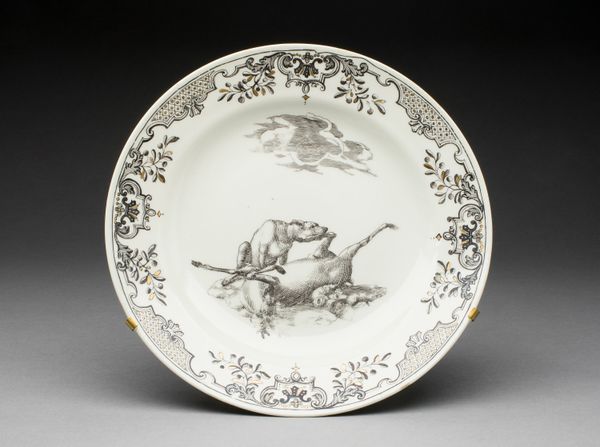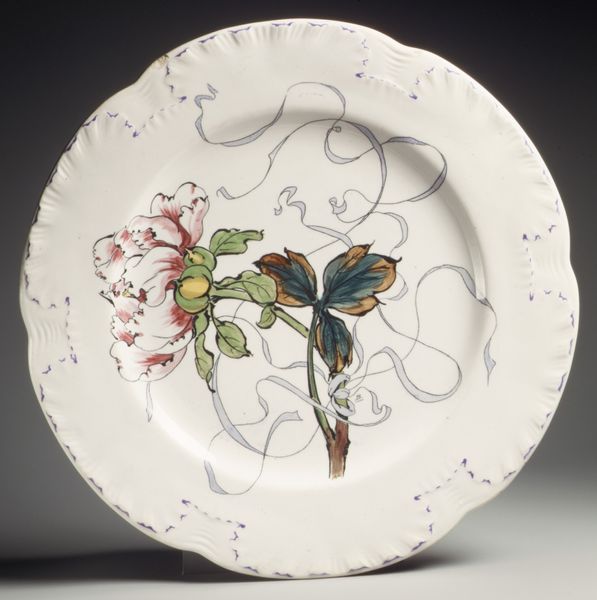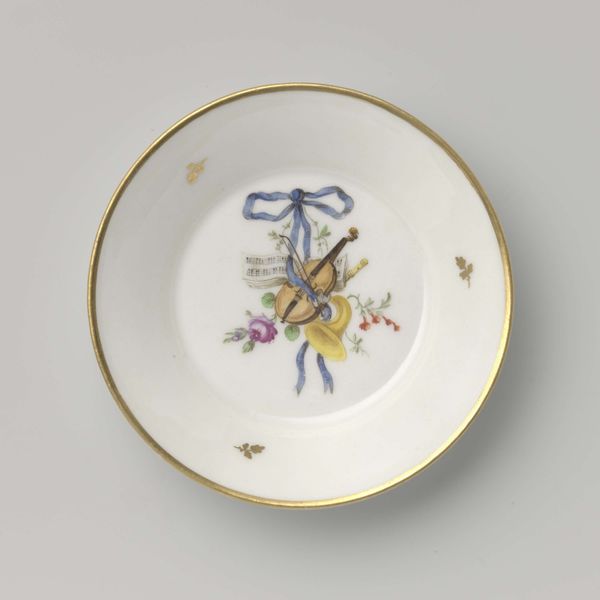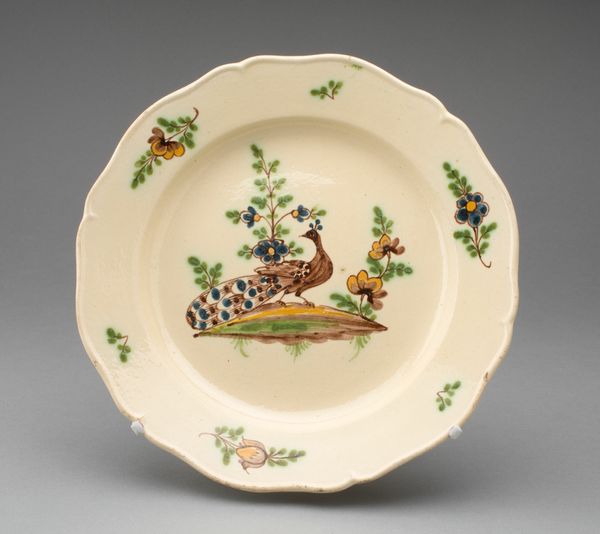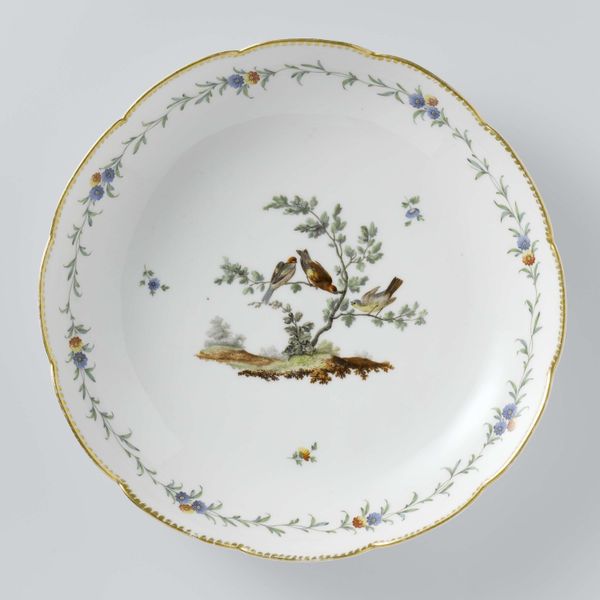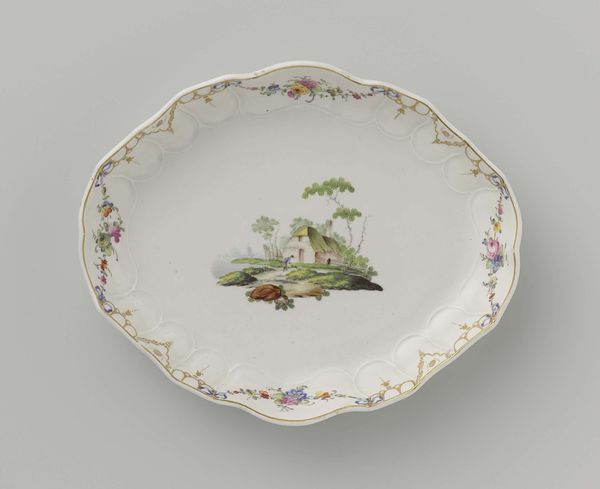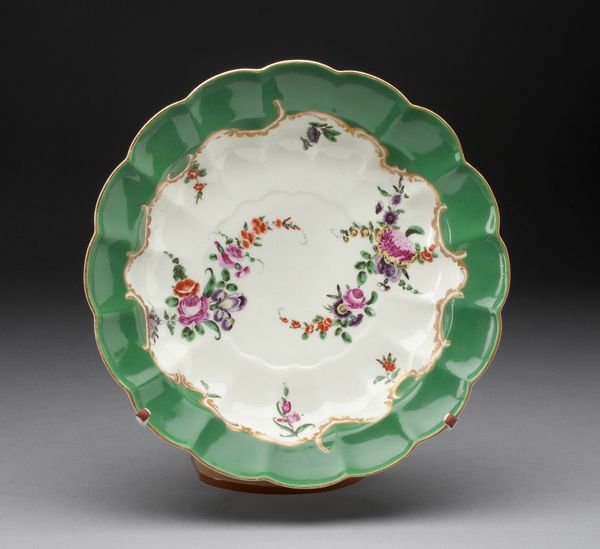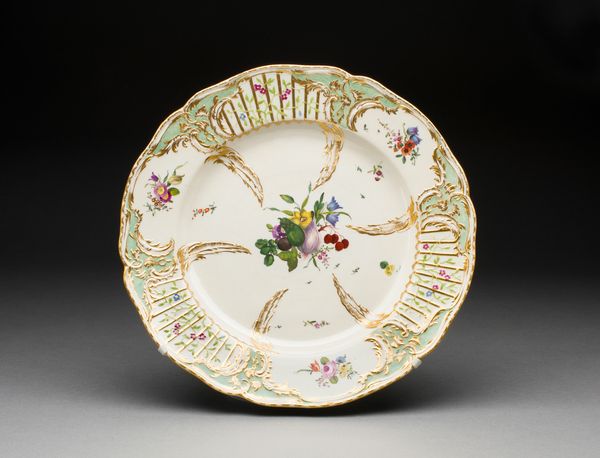
ceramic, porcelain
#
ceramic
#
porcelain
#
decorative-art
Dimensions: 1 5/8 x 9 1/8 in. (4.13 x 23.18 cm)
Copyright: Public Domain
Editor: We're looking at a soup plate made around 1805 by Dihl et Guérard, crafted from ceramic and porcelain. The decoration around the edge is what grabs me – there’s a mix of classical figures and what look like military trophies. What kind of message was this plate intended to send? Curator: Precisely! Luxury porcelain during this period, especially pieces like this originating from France, were powerful signifiers. They were very much involved in constructing and broadcasting an image of power. The figures, rendered in muted tones against the opulent gold, are drawn from a classical past, intended to legitimize the present. Editor: So the military trophies signal contemporary power? Curator: Yes, think about the context: Napoleon was consolidating his power and influence across Europe. Luxury goods displayed wealth and taste, but they were also important tools in building cultural capital and solidifying political power. Editor: So, eating your soup off this plate becomes a kind of political statement? Curator: In a way, yes. Consider who would have owned and used this plate. They weren't merely consuming food; they were participating in a visual culture steeped in political messaging. Each element, from the porcelain itself to the imagery, spoke volumes. Editor: It’s interesting how the object itself becomes a stage for political messaging and cultural identity. I'd never thought about dinnerware having this level of influence! Curator: And that influence extended beyond just those using it, but to those who saw and admired it as well, thereby becoming a conversation starter on status, style, and power in early 19th-century society.
Comments
No comments
Be the first to comment and join the conversation on the ultimate creative platform.
